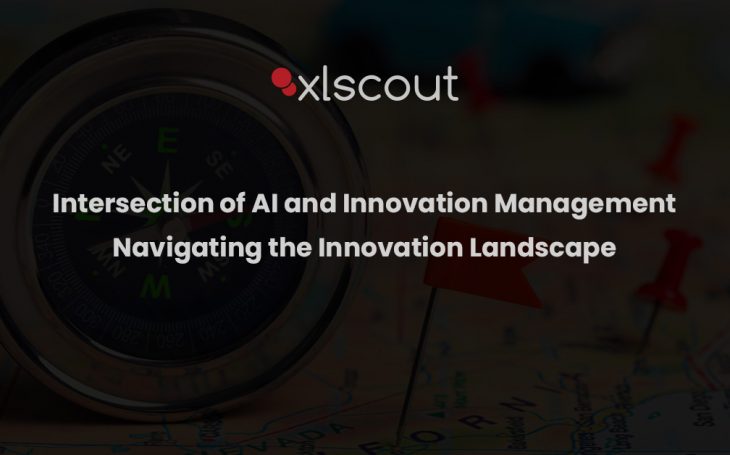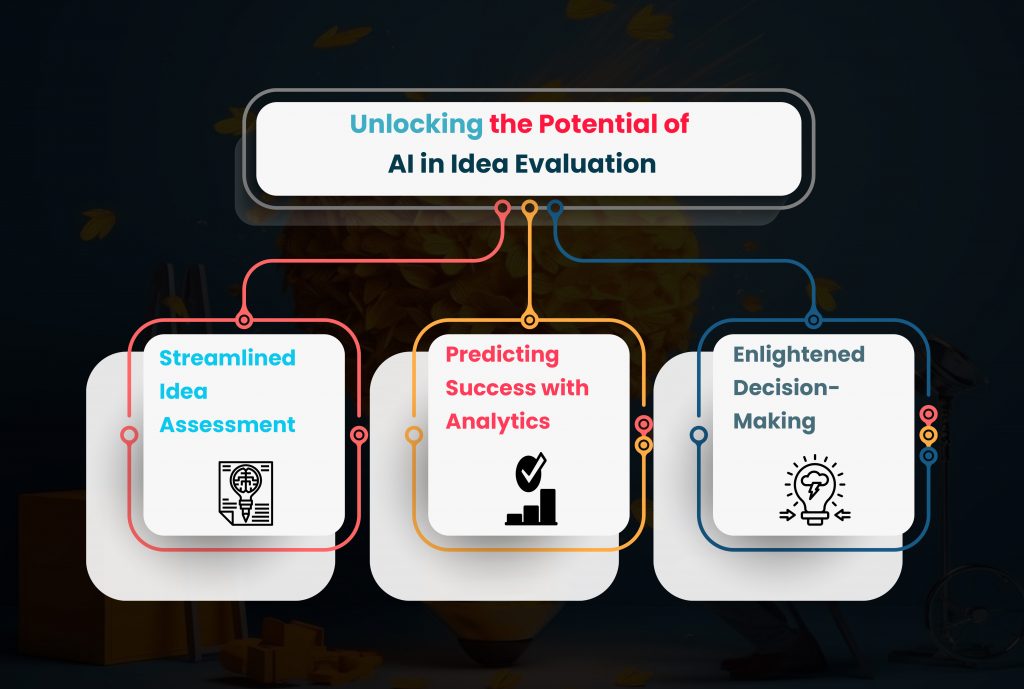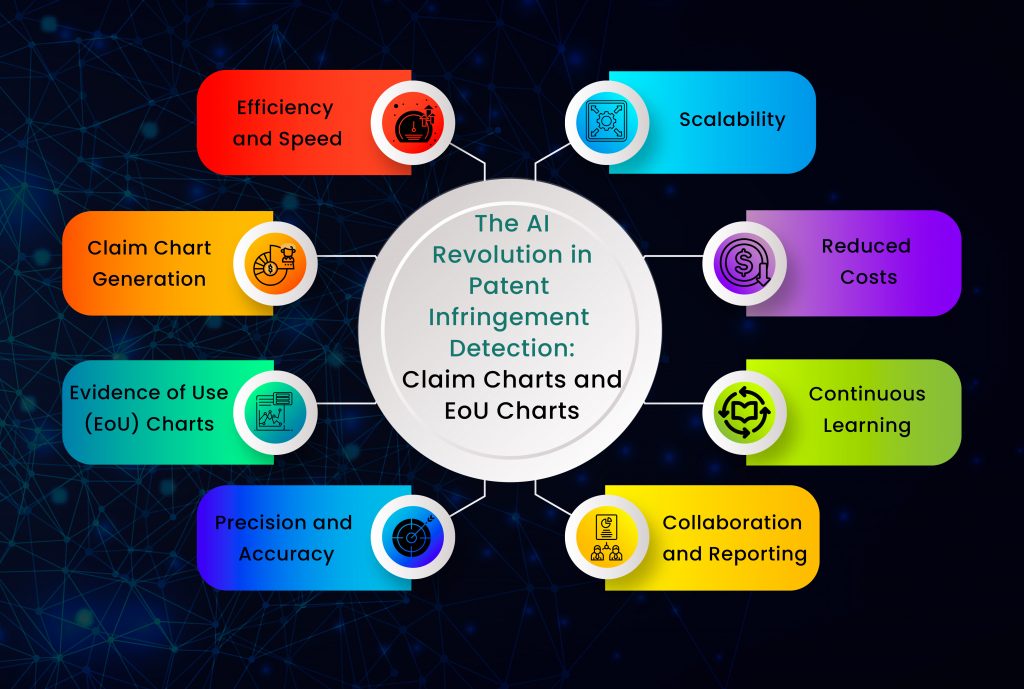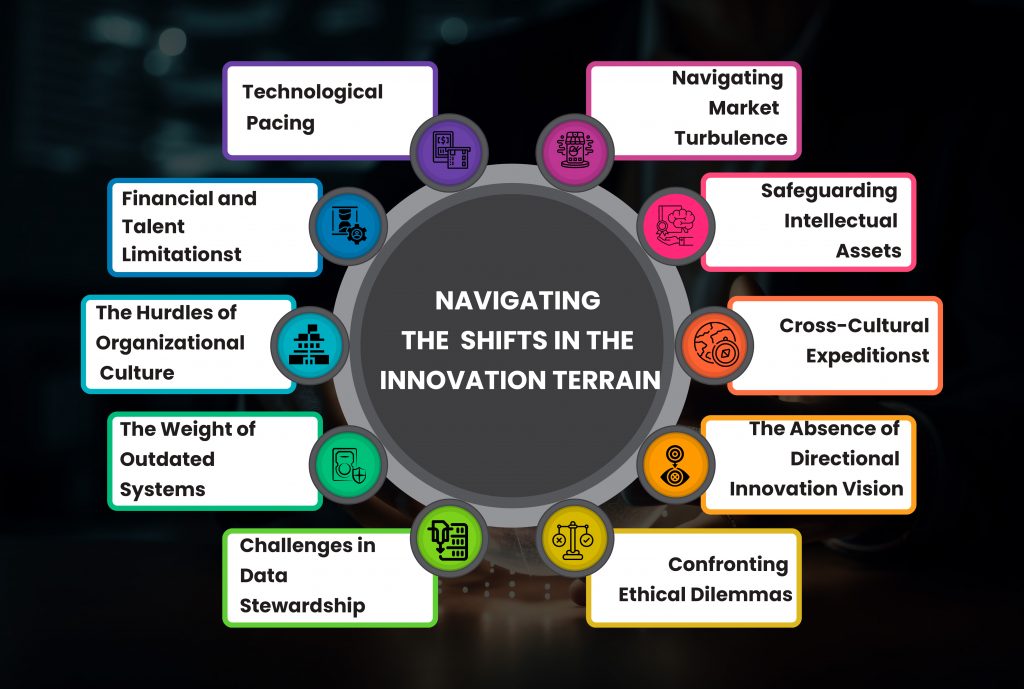
The IP (Intellectual Property) industry is no stranger to shifts and transformations. With the global innovation landscape changing rapidly, propelled by factors like technological evolution, economic fluctuations, and societal changes, navigating these waters demands more than just awareness—it requires adaptation. One transformative force driving radical change is Artificial Intelligence (AI), a tool reshaping the very fabric of the IP industry.
AI, in essence, is a computational mimicry of human cognition. Its incorporation within industries not only revolutionizes operational dynamics but also unfurls previously unimaginable avenues of potential.
Navigating the Shifts in the Innovation Terrain
1. Technological Pacing
The relentless surge of technology is ever-present. With regular technological breakthroughs, businesses need to remain alert, discerning the emerging technologies’ relevance and the best ways to integrate them.
2. Financial and Talent Limitations
Pioneering innovation is often a costly affair demanding both fiscal investment and expertise. Smaller entities, including startups, grapple with the challenge of scouting and securing premier talent, putting them at a disadvantage against industry giants.
3. The Hurdles of Organizational Culture
Introducing innovative methods can meet resistance, especially from those accustomed to the conventional. A prevailing organizational culture that resists change can stall the momentum of forward-thinking initiatives.
4. The Weight of Outdated Systems
Established systems and procedures, relics of the past, can weigh down traditional businesses, complicating their transition to embrace contemporary technologies.
5. Challenges in Data Stewardship
Innovation’s pursuit often requires handling vast data quantities. This raises the stakes for organizations to uphold data privacy standards and manage data with integrity, ensuring stakeholder confidence.
6. Navigating Market Turbulence
The dynamic innovation terrain can instigate market upheavals, ushering in new challengers and unsettling established entities. The need for a vigilant eye on market shifts and a swift response strategy is paramount.
7. Safeguarding Intellectual Assets
The fruits of innovation can often be intellectual treasures. Safeguarding these—be it via patents, copyrights, or trade secrets—is a navigational challenge every innovator faces.
8. Cross-Cultural Expeditions
Diving into diverse global markets, each with its unique cultural tapestry and business etiquette is a formidable challenge. Tailoring innovations to resonate with a myriad of audiences, all the while honoring local norms, is essential.
9. The Absence of Directional Innovation Vision
A business without a lucid, purpose-driven innovation blueprint might find its endeavors rudderless, leading to diminished outcomes.
10. Confronting Ethical Dilemmas
The dawn of innovations, especially in realms like AI, has ignited debates on privacy, employment shifts, and potential biases. A balanced and ethical approach to such concerns is non-negotiable to ensure innovation’s gains are equitably distributed.
Overcoming these intricate challenges demands foresight, leadership endorsement, adaptability, and an unwavering commitment to cultivating an innovation-friendly atmosphere. Organizations adept at this journey are ideally placed to capitalize on the vast potential the shifting innovation terrain offers.
Now, let’s delve into how AI-driven tools could be pivotal in addressing these challenges throughout the innovation lifecycle.
Spotting Opportunities and Spawning Ideas: Navigating the Innovation Terrain

In this era of perpetual technological evolution, enterprises are armed with a formidable arsenal of tools and technologies that serve as compasses in the vast landscape of innovation. These tools are not just data interpreters; they are architects of innovation, enabling businesses to chart their course, stay ahead of the curve, and maintain a competitive edge. Among these tools, AI-powered instruments stand as pivotal game-changers, reshaping the way organizations decode data, gauge consumer sentiments, predict market shifts, and ignite the flames of creative thinking.
1. Harnessing NLP for Trendspotting
At the forefront of this transformation is Natural Language Processing (NLP), a technology that empowers businesses to navigate through the vast seas of unstructured data, encompassing sources like social platforms, consumer feedback, and sector-specific studies. NLP becomes the compass that guides enterprises in pinpointing emerging patterns, understanding customer needs, and addressing their challenges. By decoding the language of consumers and the market, organizations gain a keen understanding of trends and opportunities that might have remained hidden otherwise.
2. Delving into Sentiment with Analytical Tools
Within the toolkit of AI-powered instruments are analytical tools that unravel the intricate tapestry of sentiment surrounding existing products or services. This deep dive into consumer sentiment offers businesses invaluable insights, shedding light on areas for improvement or revealing entirely new avenues of opportunity. By understanding how consumers feel about their offerings, organizations can fine-tune their strategies to align more closely with market expectations.
3. Historical Data Patterns through Data Mining and ML
Another facet of AI-powered innovation lies in data mining and machine learning (ML) techniques. These tools delve into the vast reservoirs of historical data, such as consumer behaviors and market fluctuations. Beyond deciphering existing patterns, they possess the remarkable ability to predict impending shifts. This predictive capability opens doors to latent opportunities that might not be apparent through traditional analysis. By harnessing the power of data, organizations can anticipate market trends and position themselves at the forefront of innovation.
4. AI-Driven Creativity on Idea Platforms
AI-driven creativity platforms represent the confluence of technology and human ingenuity. Rooted in AI algorithms, these platforms become catalysts for brainstorming endeavors. They offer a cascade of prompts and nudges that fuel the fires of innovative thought. By providing inspiration, guidance, and novel perspectives, AI-powered idea platforms foster an environment where creativity thrives. They empower teams to explore uncharted territories, experiment with novel concepts, and bring innovative ideas to fruition.
Unlocking the Potential of AI in Idea Evaluation

The application of artificial intelligence (AI) in the realm of idea evaluation holds the promise of revolutionizing how organizations navigate the innovation landscape. By harnessing AI’s capabilities, businesses can not only streamline their decision-making processes but also foster the emergence of groundbreaking ideas that might otherwise remain hidden. However, the key to successful AI integration lies in ensuring transparency about the criteria and methodologies used, thereby maintaining the trust and acceptance of users and stakeholders within the innovation ecosystem.
1. Streamlined Idea Assessment
The introduction of AI-powered tools for idea assessment marks a pivotal shift in how innovation managers prioritize and nurture potential concepts. These tools enable the rapid and systematic evaluation of ideas. This streamlining not only expedites the decision-making process but also empowers organizations to focus their resources on the most promising and impactful concepts. The result is a more efficient and effective innovation pipeline.
2. Predicting Success with Analytics
AI tools bring predictive analytics to the forefront of idea evaluation. By analyzing historical data and market trends, these tools can forecast the potential success of an idea or innovation with remarkable accuracy. This capability empowers decision-makers with the foresight to allocate resources strategically, invest in ideas with the highest probability of success, and navigate market dynamics proactively. It reduces the inherent uncertainty in innovation and enhances the organization’s ability to make data-driven decisions.
3. Enlightened Decision-Making
AI-driven decision support systems represent a significant leap in the quest for innovation excellence. These systems go beyond mere data analysis; they offer valuable insights and recommendations that equip innovation managers with the knowledge needed to make informed choices. By leveraging AI-driven insights, decision-makers can weigh the pros and cons of various ideas, identify potential challenges, and align their strategies with the organization’s broader innovation goals. This enlightened decision-making process ensures that resources are allocated judiciously and innovation efforts are directed toward initiatives that have the greatest potential to deliver value.
Generating Patent Application Drafts with Cutting-Edge AI Technology
In the realm of intellectual property and innovation, the process of patent application drafting is a critical and intricate task. It requires a comprehensive understanding of the invention, a deep knowledge of patent laws and regulations, and the ability to articulate the technical details clearly and concisely. Recently, the integration of advanced AI technologies, particularly Large Language Models, has transformed the landscape of patent application drafting, offering numerous advantages and efficiencies.
Here’s how the latest AI technology, exemplified by Large Language Models, is revolutionizing patent application drafting:
1. Enhanced Efficiency
AI-powered systems can swiftly analyze vast volumes of technical documents, scientific literature, and existing patents. This capability allows patent attorneys and inventors to expedite the initial stages of patent drafting, saving both time and resources.
2. Legal Comprehension
Large Language Models are trained on extensive legal databases, making them well-versed in patent laws and regulations. This legal acumen enables them to ensure that patent applications align with the legal requirements of specific jurisdictions.
3. Technical Expertise
These AI models possess the ability to grasp and synthesize intricate technical details, making them invaluable in deciphering complex inventions. They can generate patent drafts that accurately capture the essence of the innovation, ensuring comprehensive protection.
4. Clarity and Consistency
AI-driven drafting tools excel in producing patent applications that are clear, consistent, and devoid of ambiguities. This not only enhances the chances of successful patent grants but also aids in effective communication with patent examiners and stakeholders.
5. Time and Cost Savings
By automating various aspects of patent drafting, including the creation of descriptions, claims, and references, AI-driven systems reduce the manual workload for patent professionals. This leads to significant time and cost savings throughout the drafting process.
6. Customization
AI-powered drafting tools can be tailored to specific industries, technologies, or jurisdictions. This customization ensures that the generated patent applications align with the unique requirements of each innovation and market.
7. Continuous Learning
Large Language Models continuously evolve and learn from new data, including recent patent grants and legal precedents. This adaptability ensures that the generated patent drafts remain up-to-date and in compliance with evolving regulations.
8. Collaboration Facilitation
AI-driven drafting tools often offer collaboration features, allowing multiple stakeholders, including inventors, patent attorneys, and experts, to contribute and review drafts collaboratively in real-time.
The AI Revolution in Patent Infringement Detection: Claim Charts and EoU Charts

Patent infringement searches are a fundamental component of intellectual property management, enabling patent holders to identify potential violations and protect their innovations. Historically, these searches were labor-intensive, time-consuming, and often required teams of legal experts to manually analyze complex patent claims and compare them to existing products or technologies. However, the advent of advanced AI technologies, exemplified by Large Language Models, has ushered in a transformative era in patent infringement search by automating the generation of Claim Charts and Evidence of Use (EoU) Charts.
Here’s how the latest AI technology is revolutionizing patent infringement search:
1. Efficiency and Speed
AI-powered systems, fueled by Large Language Models, are capable of swiftly analyzing extensive patent databases, extracting key information from patent claims, and identifying relevant patents or products that may be infringing. This acceleration significantly reduces the time required for patent infringement searches.
2. Claim Chart Generation
Claim charts are essential tools in patent infringement analysis, illustrating how the claims of a patent map to specific elements or features of a product or technology. AI-driven systems can automatically generate detailed claim charts, highlighting the points of overlap and potential infringement, streamlining the legal process.
3. Evidence of Use (EoU) Charts
EoU charts provide a comprehensive visual representation of how a patented technology is being used in real-world products or services. AI technology can comb through vast datasets, including technical documentation, user manuals, and product descriptions, to identify evidence of use cases, making it easier to establish patent infringement.
4. Precision and Accuracy
AI models are equipped to understand the nuances of patent language and technical jargon. They can identify even subtle similarities between patent claims and existing products, reducing the likelihood of overlooking potential infringements.
5. Scalability
AI-powered systems are highly scalable, making them suitable for handling large-scale patent portfolios and extensive product catalogs. This scalability ensures that patent holders can efficiently monitor and protect multiple patents simultaneously.
6. Reduced Costs
By automating the labor-intensive aspects of patent infringement searches, AI-driven systems help reduce legal costs associated with manual research and analysis. This cost-effectiveness benefits both patent holders and businesses looking to avoid potential infringements.
7. Continuous Learning
Large Language Models are constantly updated with new patent data, legal precedents, and industry developments. This continuous learning ensures that the AI remains up-to-date with evolving patent laws and technologies, enhancing the accuracy of infringement searches.
8. Collaboration and Reporting
AI-powered tools often offer collaboration features, allowing legal teams to work together seamlessly on infringement analysis. Additionally, they generate comprehensive reports and visualizations that simplify communication with stakeholders.
Unlocking Innovation and Overcoming Challenges: XLSCOUT’s AI-Powered Solution
In the ever-evolving landscape of innovation and intellectual property management, businesses face a myriad of challenges. These challenges include navigating patent workflows, safeguarding intellectual assets, monitoring competitors, and maintaining data privacy and security. To address these issues effectively, businesses need innovative solutions that can transform their approach to innovation management. This is where XLSCOUT steps in as a comprehensive AI-powered solution to overcome these challenges.
Streamlining Patent Workflows
XLSCOUT streamlines patent workflows by removing outdated systems and incorporating AI into the process. This results in more efficient and cost-effective patent searches accelerates research and development and ensures comprehensive patent protection.
Safeguarding Intellectual Assets
With XLSCOUT, businesses can safeguard their intellectual assets effectively. AI-powered claim charts and EoU charts identify potential infringements, enabling proactive protection of innovations.
Competitor Monitoring for a Competitive Edge
XLSCOUT’s competitor monitoring capabilities empower businesses to stay vigilant in a rapidly changing marketplace. By staying informed about competitor activities and emerging trends, organizations can seize opportunities and maintain their competitive edge.
Privacy and Security Assurance
XLSCOUT prioritizes user privacy and data security. It does not store user data or ideas, ensuring that sensitive information remains confidential. This commitment to privacy and security sets XLSCOUT apart as a trusted solution.
Conclusion: Embracing AI in the Shifting Landscape of Innovation
As we draw this discussion to a close, it’s evident that thriving amidst the ever-evolving innovation landscape demands adaptability and the integration of AI as a formidable ally in the realm of innovation management. Embracing AI-driven tools such as Natural Language Processing, LLMs, Generative AI, and machine learning algorithms bestows upon organizations the ability to glean valuable insights, discern emerging opportunities, and make informed, data-backed decisions throughout the innovation life cycle.
Nevertheless, it is paramount to address the issues of data quality, biases, and ethical considerations when implementing AI responsibly. Connect with XLSCOUT to embark on a journey, where the fusion of creativity and technology shapes a future characterized by innovation excellence. Seize the moment and secure your position at the forefront of the dynamic world of innovation.


